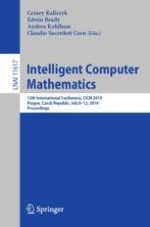2019 | OriginalPaper | Chapter
Inspection and Selection of Representations
Authors : Daniel Raggi, Aaron Stockdill, Mateja Jamnik, Grecia Garcia Garcia, Holly E. A. Sutherland, Peter C.-H. Cheng
Published in: Intelligent Computer Mathematics
Publisher: Springer International Publishing
Activate our intelligent search to find suitable subject content or patents.
Select sections of text to find matching patents with Artificial Intelligence. powered by
Select sections of text to find additional relevant content using AI-assisted search. powered by
